Editor’s note: The following is extracted from Cavalry Combat (Cavalry School of the United States Army, published 1937).
As a preliminary to the discussion of cavalry combat of small units engaged in the World War, it will be worth our while to sketch briefly cavalry tactical evolution, so that the correct characteristics of modern cavalry may be appreciated.
From approximately 3,000 years ago, to the present time, the mounted service has been marked by certain peculiarities which have distinguished it from other arms. The speed of the horse and the impetuous spirit, which the constant habit of riding seemed to impart to the horseman, produced vigor, initiative, dash, and boldness in the attack. Man and horse were used as a projectile-weapon, as it were, hurling them with speed at the enemy. This shock effect later was augmented by the cutting and piercing weapons and with maneuvering tactics. During the classical age, tactical organization was based on the nature of the country rather than on any idea of weapon cooperation or combination between the arms. Thus in Sparta we find practically no cavalry, while in Scythia mounted bowmen alone existed.
It may be of interest that the word “cavalry” is derived from the Latin “caballus”, meaning horse; a word which came into use in military literature about the middle of the sixteenth century, and was then applied to mounted men of all kinds employed for combatant purposes. Prior to that time, primitive types of soldiers were classed as foot soldiers or horse soldiers.
The earliest records of mounted combatants as a distinct military organization date far back in the history of Asia. Diodorus, a Greek historian of the first century B.C., states that Osymandias, who lived before the Trojan War (1230-1190 B.C.), led 20,000 mounted men against the rebels in Bactriana. In the first Messenian War, 743 B.C., Lycurgus formed his cavalry in divisions. In the battle of Arbela, 331 B.C., Alexander, leading 7,000 of the Macedonian cavalry, dashed into a gap of the Persian army, and by this brilliant feat of daring and skill utterly routed the enemy, thereby establishing cavalry as a decisive tactical factor.
Hannibal’s use of cavalry was superb, as the battles of Trebbia, 218 B.C., and of Cannae, 216 B.C., testify. In both of these the Carthaginian cavalry completely dislocated the Roman legions by a rear attack. In the Roman armies the lack of good cavalry proved their ruin, and it was not until such a force was raised and trained by Scipio Africanus that the Carthaginians were eventually defeated at the battle of Ilipa (Iling), 205 B.C., and annihilated at that of Zama, 202 B.C. At Ilipa, Scipio beat Hasdrubal by a double envelopment carried out with infantry and cavalry, and at Zama he smashed Hannibal by holding him in front with infantry and striking him in rear with cavalry.
It is an interesting fact that saddles were not used before the time of Constantine, 306 A.D.; the use of horseshoes dates back as far as 480 A.D.; and stirrups were introduced by the Franks in the fifth century. The cavalry hauled its projectile throwers to the scene of battle, which, on account of decreasing the mobility of the arm, necessitated the organization of a separate arm — ultimately field artillery.
In the thirteenth century, for comprehensive examples of an incomparable strategic conception in the utilization of superior mobility, “fire power” (archers and projectile throwers) and shock action; in distant reconnaissance in force; diversion attacks and in relentless pursuit, we have but to mention the name of Genghis Khan (who died August 18, 1227, and his great Generals Djebe and Subotai. During those thirty years, the mounted Mongolian hordes conquered, temporarily, the ancient world from the Yellow Sea to the Adriatic. “It was the first time in military history that ‘fire’ preceded and prepared the action; the shock was the second part of the action.”
During the middle ages in Europe, cavalry may be said to have constituted the only efficient combatant organization. The weapons used were the battle axe, sword, and lance or pike. The personnel, consisting almost entirely of the nobility, possessed an esprit de corps that overcame all obstacles. The serfs, not having the means to keep horses, principally composed the foot soldiers.
Up to this stage, the value of cavalry during combat had been for the purpose, primarily, of collision, which had resulted in the rapid spread of the heavy Dongola or African strain of horseflesh all over the then known world. The indigenous horses of Europe and Asia were too small for this purpose when burdened with armor. The cavalier of this epoch, literally ironclad, had reduced mobility to a minimum, and in seeking protection from his foes had well-nigh, in return, deprived himself of the power of effecting injury to his enemies. Invincible, when opposed to the miserable, unarmored foot troops of his time, he was unable to penetrate the armor of an opposing cavalier, and warfare between men-at-arms had become almost bloodless. It is said that the armor of a knight frequently weighed over 200 pounds. At the battle of Zagonari, Italy, in 1423, the only men who lost their lives were three knights who, having fallen from their horses, were drowned in a morass. At Agincourt, some of the French knights, being unhorsed and unable to rise from the mud, were ridden over and suffocated. The charge could be made only at a slow trot. Altogether, the cavalry in its true sense was at the lowest ebb of its tactical effectiveness.
When gunpowder became a military factor, the cavalry, unable to add to the thickness of its armor, introduced a weapon called the petronel. It consisted of a simple iron or brass tube with a touch-hole on top fixed on a straight wooden handle which, in firing, rested against the breast. The muzzle was steadied by a fork-rest which stood up from the pommel. This weapon subsequently was much improved and developed into the arquebus which was fired from the shoulder. It was furnished at first with the match-lock and later the Germans developed the wheel-lock pistol which they used in the battle of St. Quentin in 1557.
Too slow and unwieldy to deliver effective shock and with fire power inferior to that of the rapidly improving infantry which it now encountered, the cavalry of this period was all that cavalry should not be; and Machiavelli, writing about 1515, declared that “well-organized infantry could hardly be beaten except by infantry.”
The pistol, invented in 1521, soon was introduced as a cavalry weapon, and added considerably to the power of the cavalryman, although the tactics adopted for its use, to say the least, were most extraordinary. The German cavalry formed in depth, habitually in seventeen ranks, made no attempt to use shock action, but merely rode up to the enemy without charging, and when at close range the front rank fired its pistols, wheeled at a trot to the right and left unmasking the second line, and reformed in rear to load. Each rank, in turn, repeated this maneuver, and for a time it seems they got results; but the French cavalry finally adopted the tactics of impetuous charging, while the Germans were firing, and almost in variably overthrew them.
In imitation of the French organization, however, great improvements in the German cavalry were made by Charles V. Instead of forming the unwieldy companies of 600 combatants, Charles organized squadrons of 400 troopers each and reduced the number of ranks first to ten and after wards to eight. Henry IV of France introduced a still shallower formation of six ranks.
The tactics of this period show a peculiar intermingling of cavalry and infantry in ranks, which apparently did not prove satisfactory, for in the battle of Coutras in 1587 the infantry was placed on the flanks with the cavalry in the center. When the Royalists cavalry arrived within twenty paces, the infantry fired a volley; the Hugenot cavalry immediately made a counter-charge and drove the Royalists from the field.
The lance gradually disappeared. The armor of cavalry, now being unable to resist musket-shot, was lightened. Otherwise no radical developments occurred in cavalry until Marshal de Brissac, 1584-1609, formed a corps of mounted infantry, called “dragoons,” trained to fight either on horseback or on foot. A dragon was used as the insignia on the helmet of the mounted soldiers of the Middle Ages; hence the name “dragoon.”
Maurice of Nassau, appreciating the importance of giving more mobility to this arm, was the first to organize cavalry into regiments, each being composed of about 1,000 horses.
Charles XII of Sweden abolished all defensive armor and the use of firearms on horseback, and armed his cavalry with the long, straight sword, especially adapted to thrusting. He taught his cavalry to charge the enemy at full speed. The true role of cavalry as it later developed was now beginning to be understood. Thus, we have the Cavalry Cycle.
Frederick the Great (1712-1786), during the Seven Years War, did much toward developing the tactical use of cavalry, training his troops to excel in the arts of swords and horsemanship. To compensate for the loss of fire action and to prevent helpless exposure to the fire of the opposing infantry and artillery until coming within saber-reach, Frederick introduced horse artillery, consisting of light guns attached to cavalry, which paved the way for the charge and which continued firing until masked by the cavalry. But, perfect as Frederick’s cavalry was on the field of battle, it was distinctly inferior to that of the Austrians in all details of the service of security and information or reconnaissance. The Austrian light cavalry formed a perfect screen around their army, which they kept posted relative to every movement of Frederick, while the Prussian monarch was kept completely uninformed regarding the movements of his adversary. Frederick’s convoys, messengers and mail-bags were captured; a force of 4,000 Austrian light-cavalry made a raid and captured Berlin; and at Sohr and Hockkirch he was surprised by the enemy and was saved from disaster only by his own military genius.
During the Napoleonic era, the lance and helmet made their reappearance and the French cavalry was completely reorganized and differentiated into types according to weight and equipment. The big horses went to the Cuirassiers or heavy charging cavalry, the best light horses to the hussars, and the dragoons (mounted infantry) received the remainder. The cuirass is a piece of defensive armor which also is called “breast and back plate.”
Master of everything pertaining to the art of war, Napoleon made the most perfect use of his cavalry. In delivering a decisive shock on the field of battle and in the relentless and unflagging pursuit of a beaten enemy, his cavalry rivaled that of Frederick; while in screening and in reconnoitering duty, it went everywhere and learned everything. Nor was the element of fire power neglected by Napoleon, as evidenced by the mounted fire action and charge at Eylau in which the Twentieth Chasseurs à Cheval defeated an enormous mass of Russian dragoons.
The invasion of Russia by Napoleon first brought into prominence a peculiar force of light cavalry, the Cossacks. The Russian army also contained a great force of cuirassiers, dragoons, hussars and uhlans, but their influence on the final result could not be compared with the irregular light cavalry furnished by the Cossack tribes. The Cossacks were armed with the lance, sword and pistol, and later, in 1813-14, with infantry muskets captured from the French. They were expert in horsemanship and developed a system of fighting on foot similar to that employed a half-century later by our American troops. General Morand stated: “The march of the Grand Army was first delayed by the Cossacks, and later they cut it off from every source of supply, and swarmed around its flanks like savage bees engaged in tormenting and exhausting a roaring lion with their innumerable stings.” This irritating force, elusive and omnipresent, made itself especially felt at the time when Napoleon’s cavalry, depleted in numbers and exhausted by hardship, was less than one-fourteenth of the strength of his infantry. The Great Emperor deplored his lack of cavalry, the want of which to conduct pursuit made barren his brilliant victories of Lutzen and Bautzen; and for days before the battle of Leipsic he knew little of the Allies’ movements, while they were thoroughly informed of his own. His military genius was paralyzed by lack of information. His deficiency in light cavalry, more than any other cause, therefore, contributed to his downfall.
It was then that Napoleon soliloquized: “The whole secret of the art of war lies in making one’s self master of the communications.”
The development of horse cavalry in the modern sense, however, first appeared in the Southern forces during our Civil War. The natural result of the civil life of its personnel brought them to their colors trained both in horsemanship and in the expert use of the rifle and revolver. The great efficiency of the Southern cavalry, able to make sustained, rapid marches across country, expert in scouting and equally prepared to fight mounted or to use their firearms dismounted in battle, soon was realized by the
Northern leaders, who, by the end of the war, utilized masses of cavalry with destructive effect.
In the succeeding years of continuous fighting with the Indians in the West and in guarding the southern frontier, the characteristics of mobility, fire power and shock, as well as the adaptability to all types of fighting, were further developed.
The cavalry forces of European nations, however, were slow to profit by our experiences. In 1914, the French “Regulations for the Service of Armies in Campaign,” Article 89, provided:
“Mounted attack with the Arme Blanche (saber or lance), which alone gives rapid and decisive results, is the principal mode of action of cavalry.
“Dismounted combat is employed when the situation or terrain momentarily prevent attaining the mission by mounted action.”
The consequence, according to Lieutenant Colonel Prioux (later Major General, Chief of French Cavalry) in a lecture at The French War College, 1923, was that at the beginning of the World War “all (French) cavalry units, from the platoon to the division, were prepared for mounted combat ; on the contrary, dismounted combat was only foreseen for the platoon, squadron, and regiment.”
The German “Regulations for Maneuver, 1909,” which was the last issued before 1914, stated: “The cavalry should always try to fill the missions given it by the offensive. It only attacks with the carbine where the lance is unable to play its part.”
One, however, may deduce the German trend of thought in 1914 by a memorandum issued during their cavalry maneuvers : “Participate in the battle in all circumstances, especially by fire; spend yourself freely in pursuit.”
This tendency towards a new formula for cavalry may explain the German tactics at the beginning of the War, when it sought to draw the enemy patrols, in pursuit of its own patrols, under the fire of its infantry supports, and which led the French cavalrymen to believe that by their persistent, impetuous mounted charges they attained “a moral advantage of great extent.”
It is noteworthy that the “Field Service Regulations, U. S. Army, 1913,” paragraph 269, provided that: “Cavalry possesses the following methods of fighting:
“1. The mounted charge, alone, or supported by artillery or by dismounted fire action, or by both.
“2. Dismounted fire action, offensive or defensive alone, or in combination with artillery.
“3. Mounted fire action in exceptional cases.”
“Cavalry Service Regulations, U. S. Army, 1914,” Paragraph 551: “Cavalry should be bold and enterprising. In its rapid movements it often encounters the enemy in unprepared situations. Undue caution then forfeits the advantage of surprise, which is an influential factor in the success of a charge, since the normal element is combined with the effect of the weapons.”
Paragraph 552: “Cavalry must not only be strongly impressed with the power of its rifles, but must be ready to assault on foot and to capture positions held by the enemy with the same determination and resolution as Infantry …”
Paragraph 553: “The most effective directions of attack are against the enemy’s flank and rear.”
Lieutenant Colonel Prioux, in 1923, further expounded that:
“… in fact, on the terrain which is adjacent to our (French) frontiers, due to constructions of every kind, especially wire enclosures, large cavalry units possessing fire power can no longer employ mounted attack.
One must, however, be careful not to generalize this conclusion and extend it to small cavalry elements which, on the contrary, can benefit by the cover of the terrain, or to large units operating in slightly inhabited regions in which there is open space for maneuver.”
During or just prior to the World War, European cavalry incorporated in their mounted service the machine gun and automatic pistol, and, in addition, armored cars. It developed during the World War that the role of mechanized cavalry (see Chapter Twelve, Section V) is essentially that of horse cavalry, since its characteristics are “mobility, fire power and shock,” making combined action of horse and mechanized cavalry possible and desirable. To obtain the maximum efficiency and effect, however, each must be used in conjunction with, but not tied to, the other. One supplements the other.

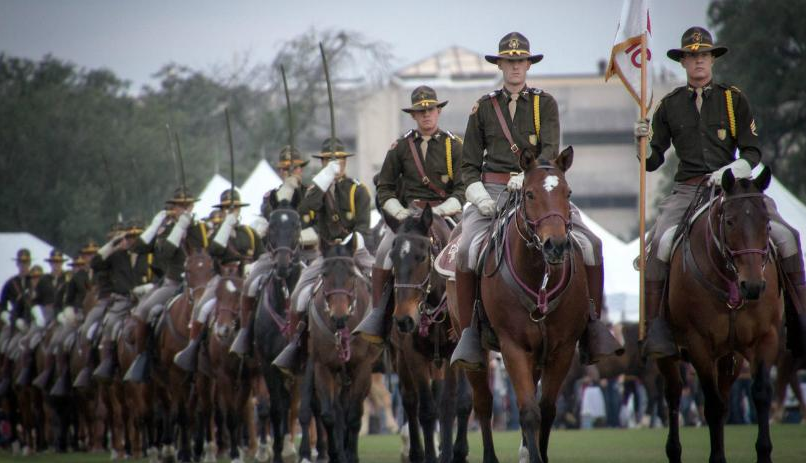



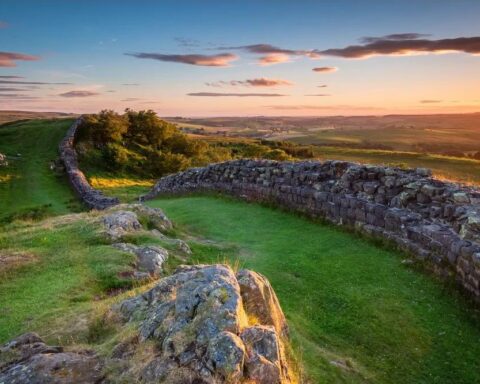
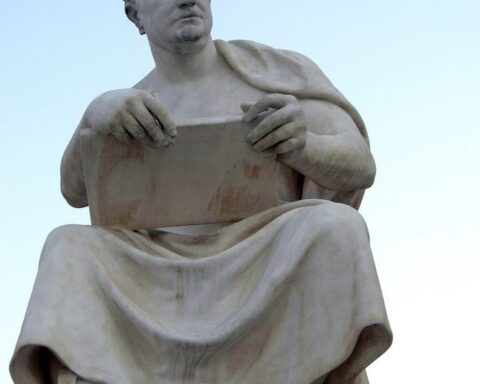
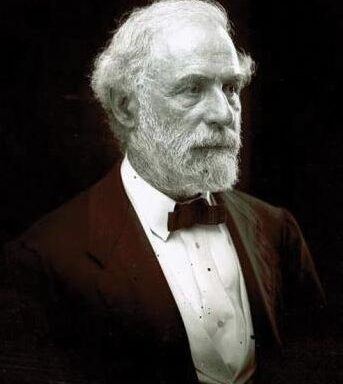
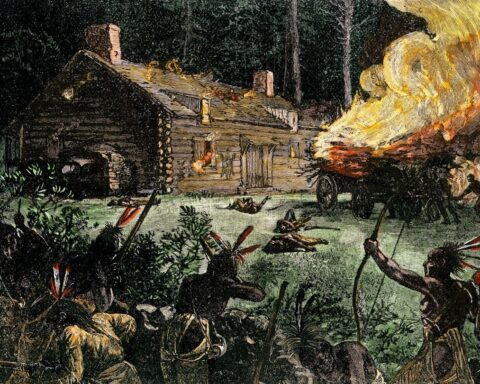
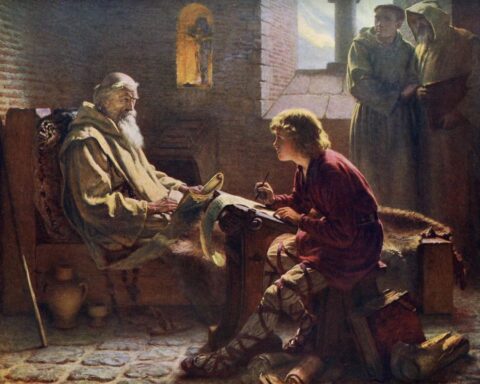
I wish more fantasy authors had read this 1937 treatise before they started on their books.
Beyond the massive shock of WW2’s subsequent marriage of cavalry and instant communications, there needs to be a another new section devoted to cavalry during modern insurgencies. Lind’s exclusive focus on light infantry does, I think, a disservice.
There’s a lot there:
– Aircav. Of course.
– SOCOM horse riders in Afghanistan
– Motorcycle assassination squads
– Van Riper’s use of what amounts to light cavalry for non-electronic comms
– The uses of wheeled vs. tracked vehicles within urban terrain
Some of these are refinements of earlier developments. Some are genuinely new. There’s a legit case that maneuver warfare beyond infantry on foot is an important dimension, and reaches well beyond just helicopters.
I thoroughly enjoyed reading your article on the history of the Cavalry. It may be worth mentioning that the Cavalry was also employed in the RHODESIAN BUSH-WAR. I was fortunate to be a Trooper in the Grey’s Scouts (a mounted infantry unit) in the Rhodesian Armed Forces during our conflict with the Communist inspired enemy.
It is true what the article mentions regarding the esprit de corps that exists amongst the men of the Cavalry; there is just something unique about it. Our maneuverability, determination and superior tracking abilities (from horseback) enabled us to search and destroy successfully.
Make no mistake the foot soldier is still and ever will be, indispensable – so it is with a measure of sadness that I admit that in today’s modern warfare the Cavalry is becoming outdated. Of course, that doesn’t mean to say in certain parts of the world it couldn’t still be used with good success: terrain determines….. any EMP strike would also bring back Cavalry units.